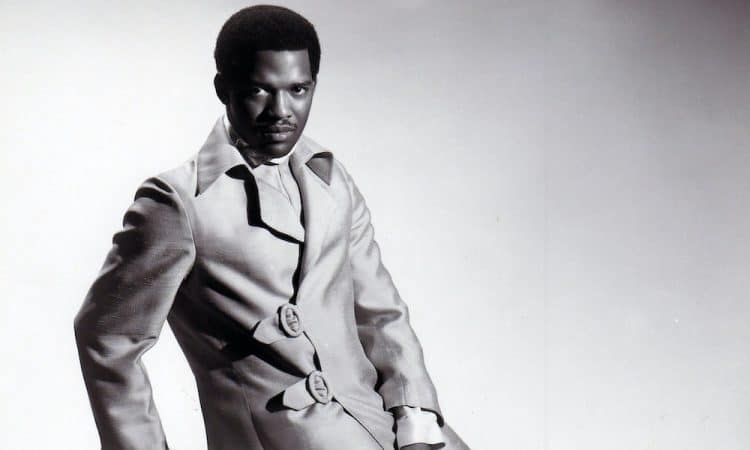Edwin Starr, born Charles Edwin Hatcher on January 21, 1942, was an American soul and R&B singer known for his powerful and dynamic vocal style. Rising to prominence in the 1960s and 1970s, Starr became a prominent figure in the Motown stable, delivering energetic and socially conscious performances.
Starr’s breakthrough came with the iconic protest anthem “War” in 1970, written by Norman Whitfield and Barrett Strong. The song’s intense delivery and potent lyrics, coupled with Starr’s impassioned vocals, made it an anthem of the anti-Vietnam War movement. “War” became a chart-topping hit and remains a defining moment in Starr’s career.
Prior to “War,” Starr had already enjoyed success with hits like “25 Miles” and “Agent Double-O-Soul.” His ability to infuse soul and funk with a raw, electrifying energy set him apart in the music landscape.
Beyond his protest anthems, Starr showcased versatility in his music, exploring themes of love and relationships. His contribution to the soul genre is marked by a distinctive voice and an unwavering commitment to delivering powerful, socially relevant performances. Edwin Starr’s impact endures in the annals of soul music, and his legacy is cemented by the timeless resonance of “War” and his contributions to the Motown sound.
1. Contact

Contact is one of Edwin Starr’s most renowned songs. It’s full of energy, passion, and soulful vocals. The infectious rhythm and catchy melody capture the essence of Motown sound. The lyrics convey a sense of urgency, making it hard to resist dancing. Starr’s dynamic vocals take the spotlight, keeping you hooked from beginning to end. Also, the production and arrangements are impeccable. The track blends various musical elements, creating a vibrant, captivating atmosphere. So turn up the volume and let the music take control. Sing along with Starr’s powerful vocals and let the emotion resonate with your own. To explore more of Starr’s discography, check out songs like War and Twenty-Five Miles. These hidden gems will leave you amazed.
2. H.A.P.P.Y. Radio

“H.A.P.P.Y. Radio” is an upbeat and infectious disco song by Edwin Starr, released in 1979. The song is known for its energetic and feel-good vibe, capturing the essence of the disco era.
The lyrics of “H.A.P.P.Y. Radio” celebrate the joy and escapism found on the dance floor. The title itself is an acronym for “Happiness, Love, Peace, and Youth,” reflecting the positive and carefree spirit of the disco movement. The chorus features the repeated lines: “I want to dedicate this to the world, keep on dancing, shake it to the universe.”
Edwin Starr’s charismatic vocals, coupled with the pulsating disco beat and catchy melody, contributed to the song’s success. “H.A.P.P.Y. Radio” became a dancefloor anthem during the late 1970s disco era.
While not as widely recognized as some of Starr’s earlier hits, “H.A.P.P.Y. Radio” remains a lively and enjoyable representation of the disco sound. The song continues to evoke a sense of nostalgia for the vibrant and carefree atmosphere of disco clubs.
3. Ball of Confusion (That’s What the World Is Today)

“Ball of Confusion (That’s What the World Is Today)” is a socially conscious and powerful song by The Temptations, released in 1970. The song addresses the turbulent social and political issues of its time, offering a critical commentary on the state of the world.
The lyrics of “Ball of Confusion” cover a range of topics, including war, racism, environmental concerns, and generational divides. The chorus features the iconic lines: “And the band played on, and the band played on.”
Musically, the song is characterized by its energetic and gritty sound, blending elements of soul, funk, and rock. The Temptations’ harmonies, coupled with the dynamic arrangement, create a sense of urgency that complements the weighty subject matter.
“Ball of Confusion” became a significant hit for The Temptations, reaching high positions on the charts. Its enduring impact lies in its ability to capture the tumultuous atmosphere of the late 1960s and early 1970s while offering a timeless commentary on the challenges facing society.
4. War

“War” is a powerful and iconic protest song originally recorded by The Temptations in 1969. However, it was Edwin Starr’s rendition of the song that became the most famous and commercially successful. Edwin Starr released his version of “War” in 1970, and it became a massive hit.
Written by Norman Whitfield and Barrett Strong, “War” addresses the Vietnam War and the broader issue of conflict and injustice. The song’s intense and energetic delivery, coupled with Starr’s passionate vocals, turned it into a rallying cry for the anti-war movement. The famous opening line, “War, huh, yeah, what is it good for? Absolutely nothing,” has become one of the most recognizable and quoted lines in protest music.
Edwin Starr’s version of “War” topped the charts, reaching number one on the Billboard Hot 100. Its impact extended beyond its initial release, solidifying its place in the pantheon of anti-war anthems. The song’s timeless message and powerful musical arrangement continue to resonate, and it remains a significant part of the cultural and musical history of the late 1960s and early 1970s.
5. Twenty-Five Miles

“Twenty-Five Miles” is a dynamic and energetic soul song by Edwin Starr, released in 1969. The song’s catchy and upbeat sound, along with Edwin Starr’s powerful vocals, contributed to its success as a dancefloor anthem.
The lyrics of “Twenty-Five Miles” convey the singer’s determination to reach his destination, expressing the distance he’s willing to travel to reunite with his love. The chorus features the repeated lines: “Keep on pushin’, ’cause I can’t stop now.”
The driving beat and energetic horns in the musical arrangement add to the song’s sense of urgency and momentum. Edwin Starr’s charismatic performance further enhances the overall excitement of the track.
“Twenty-Five Miles” became one of Edwin Starr’s signature songs and remains a classic in the soul and Motown genres. Its infectious energy and spirited delivery make it a standout track in Starr’s discography and a favorite among fans of dynamic and soulful music.
6. Agent Double-O-Soul

“Agent Double-O-Soul” is a classic soul and pop song performed by Edwin Starr. Released in 1965, the song became one of Starr’s early hits and contributed to his rise in the music industry.
Written by Starr himself along with William Weatherspoon and Charles Hatcher (Starr’s birth name), “Agent Double-O-Soul” features an infectious and energetic melody. The lyrics playfully depict the singer as a secret agent, adding a sense of intrigue and adventure to the song. The reference to “Double-O,” reminiscent of James Bond, adds a touch of coolness and reflects the influence of spy and secret agent themes popular in the 1960s.
The song showcases Starr’s soulful vocals and the Motown sound that characterized much of his early work. “Agent Double-O-Soul” became a hit on the R&B charts, marking an early success for Edwin Starr in his career.
While Starr is perhaps best known for later hits like “War,” “Agent Double-O-Soul” remains a delightful and lively example of his early contributions to the Motown and soul music scene.
7. Stop the War Now

“Stop the War Now” is a socially conscious and anti-war song by Edwin Starr, released in 1970. The song addresses the Vietnam War, expressing a plea for peace and an end to the conflict.
The lyrics of “Stop the War Now” reflect the sentiments of the anti-war movement during the late 1960s and early 1970s. Starr passionately sings about the devastating impact of war and calls for a collective effort to bring about change. The chorus features the powerful lines: “Stop the war now, save the people, for our sakes, please stop the war now.”
Musically, the song combines elements of soul and funk, characteristic of Edwin Starr’s style. The urgent and rhythmic arrangement complements the gravity of the lyrics, creating a compelling and impactful listening experience.
“Stop the War Now” showcases Starr’s ability to use his music as a platform for social commentary and activism. While not as commercially successful as some of his other hits, the song remains a poignant reflection of the turbulent times and the artist’s commitment to addressing important societal issues.
8. Easin’ In

“Easin’ In” is a funky and soulful track by Edwin Starr, released in 1974. The song gained prominence when it was featured on the soundtrack of the blaxploitation film “Hell Up in Harlem.” Edwin Starr, known for his powerful and dynamic vocals, infused “Easin’ In” with a groovy and energetic vibe.
The song’s funky instrumentation, characterized by a driving bassline and infectious rhythm, perfectly complements Starr’s soulful delivery. “Easin’ In” captures the essence of the funk and soul music prevalent during the 1970s, with its danceable beats and vibrant arrangements.
The lyrics of the song convey a sense of confidence and swagger, aligning well with the atmosphere of blaxploitation films of that era. Edwin Starr’s charismatic performance and the infectious groove of “Easin’ In” have contributed to its recognition as a standout track from the soundtrack.
While perhaps not as widely known as some of Starr’s other hits, “Easin’ In” remains a notable example of his ability to navigate various genres within the soul and funk spectrum. The song’s inclusion in the soundtrack added to its cultural significance during the blaxploitation film era.
9. Oh, How Happy

“Oh, How Happy” is a soulful and uplifting song by Edwin Starr, released in 1966. The song’s infectious and joyous sound, coupled with Starr’s dynamic vocals, contributed to its success on the charts.
The lyrics of “Oh, How Happy” express the sheer happiness and contentment the singer feels in love. The chorus features the repeated lines: “Oh, how happy you have made me. Oh, how happy you have made me. I have kissed your lips a thousand times.”
Musically, the song is characterized by its upbeat tempo, horn arrangements, and energetic rhythm, showcasing Edwin Starr’s versatility within the soul genre. The lively and celebratory atmosphere of the track resonated with audiences during the mid-1960s.
“Oh, How Happy” became one of Edwin Starr’s early hits and is remembered as a classic example of the Motown sound. The song’s enduring popularity lies in its ability to capture the exuberance and optimism of the era and remains a favorite among fans of soul and R&B music.
10. Headline News

Ric-Tic Records was a Detroit-based record label that operated in the 1960s. Founded by Edward Wingate and Joanne Jackson Bratton in 1965, Ric-Tic became known for its contributions to the emerging Motown and soul music scene.
Ric-Tic had success with several artists, and Edwin Starr was one of them. Edwin Starr’s early hits, including “Agent Double-O-Soul,” were released on Ric-Tic Records before he signed with Motown.
In 1968, Motown Records acquired Ric-Tic, leading to the absorption of some of its artists, including Starr, into the Motown roster. This acquisition helped further establish Motown as a dominant force in the music industry.
While Ric-Tic Records had a relatively short lifespan, it played a significant role in the development of Detroit’s soul music scene and contributed to the success of artists who would go on to make a mark in the broader Motown landscape.









